Reformers At Home
Online Reformers Sessions
Buying Your Own Home Reformer
Regarding home us, there are two Reformer makers (that we know of at the time of writing) who make Reformers for the home. They are covered here, along with a selection of Reformers, and approximate cost. We use Reformers from both of these manufacturers among others and can recommend the Reformers they produce highly. You will not be disappointed with any products shown here.
We do not make a commission, so you know that any advice or recommendations we give here is totally unbiased.
We purposely have used the the cheapest decent home Reformer we could find (at £499) to shoot some of our videos, so we know that everything we can do ourselves under video conditions, you can do too in your home.
But first…
What Is a Reformer?
In its simplest use, the user lies on the carriage and pulls the ropes — which moves the carriage along the frame towards the head end, stretching the springs/pulleys. Releasing the ropes then moves the carriage back.
The Pilates Reformer was originally filed for patent by Joseph in 1925 and the patented principle has changed very little since, though the style, production methods, and additions have developed over time.
Nowadays, the Pilates Reformer is not so basic as Joseph’s patented form. Joseph’s original was quite fixed, with few adjustments available. On a modern Reformer the footbar is often adjustable for height and position along the frame, allowing for people of various heights to use it. Headrest height is useful for different exercises performed. Shoulder rests have been added, and again are often adjustable. Legs can be added to many Reformers to allow for Studio use
The parts of a modern Studio-used Reformer are shown below. It figures that some of these parts might not be available in a Reformer intended for home use, or at least available in a restricted/less-adjustable form.
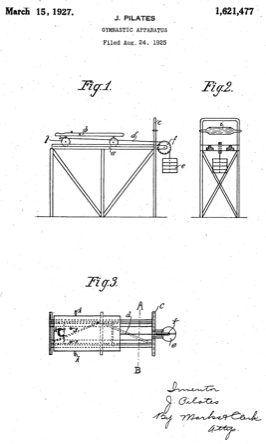
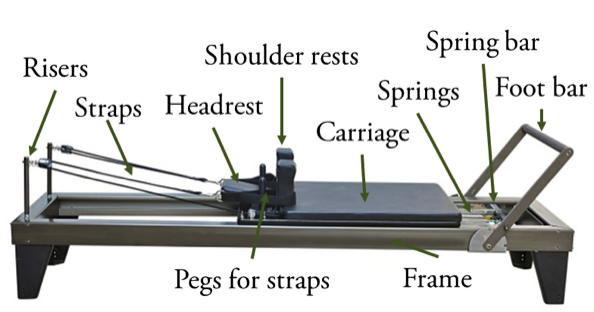
Now onto the Reformers themselves…
Home Use Reformer Manufacturers and Models
The two manufacturers of home use Reformers we can recommend (with links to their websites) are:
The models we consider here are shown below. They cover a range of prices. All three examples below are foldable, which makes them useful for storage when not in use. Both manufacturers also make non-foldable Reformers for home use (not considered here).
AeroPilates
Producing a range of Reformers, from around £500 up to £1500, AeroPilates covers a whole range of home use Reformers.
They are generally fair quality machines that perform well, produced to a home budget that — hopefully — most people can afford.
The AeroPilates 4272
In their own words, the AeroPilates 4272 is “a good entry model for anyone wishing to try Reformer Pilates for the first time”.
In our experience it’s actually much more than this. We shoot many of our home Reformer videos using this machine and are very satisfied with performance.
Yes, it does have limitations — but then, unless you’re going to spend £5000, any Reformer will have some limitations.
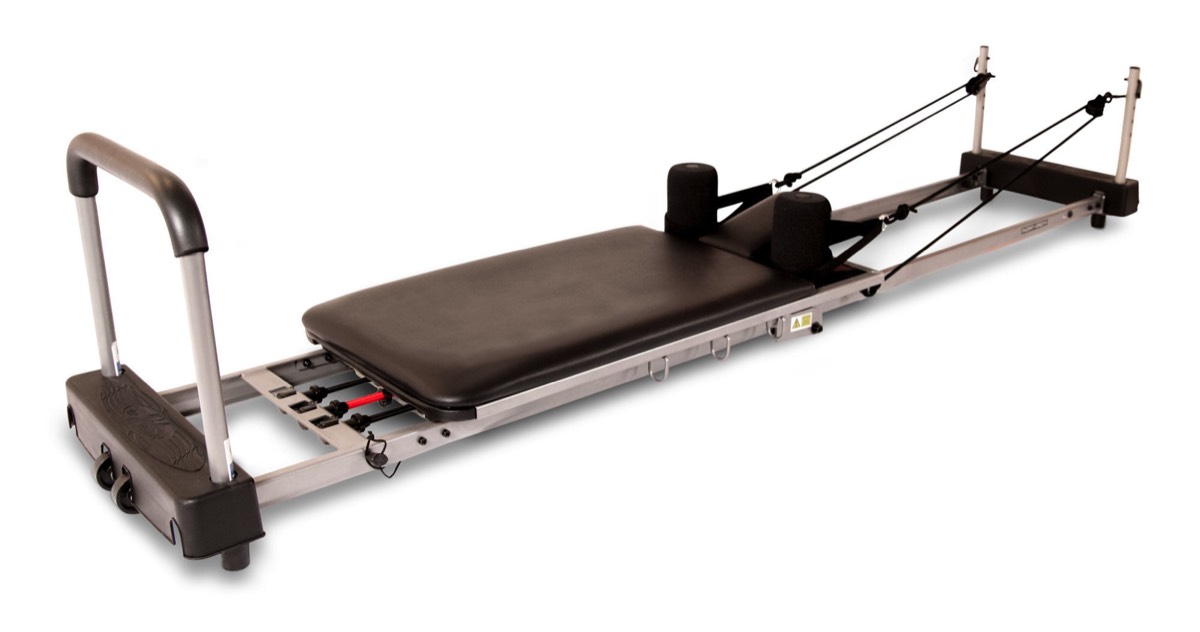
Pros
● Good price (£499)
● Easily foldable for storage
● Relatively light
● Quite a narrow frame/carriage width
● Not many adjustments
● Only 3 bungee cords
● Fixed footbar
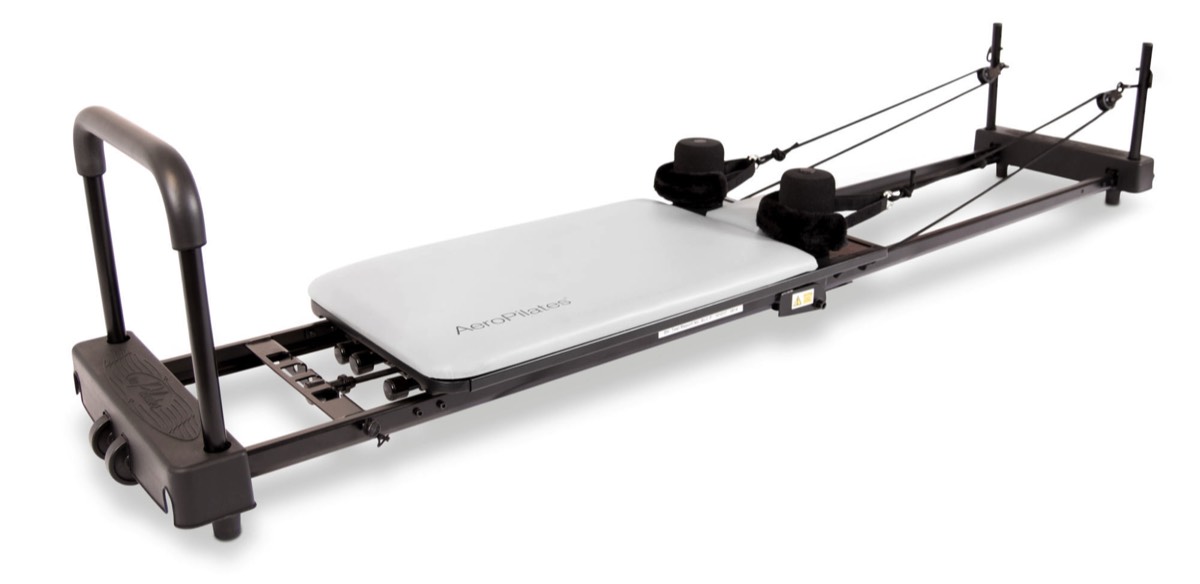
The AeroPilates 435
With four (not three, as in the 4272 model above) bungee cords, the AeroPilates 435 features more variable tensions for working under. It also is supplied with a fittable Cardio Rebounder (like a vertical miniature trampoline) to put at the foot end, again allowing for a wider variance of available exercises to do.
Pros
● Medium price (£639)
● Easily foldable for storage
● Quite a strong frame
● Cardio rebounder included
● Quite a narrow frame/carriage width
● Not many adjustments
● Bungee cords
● Fixed footbar
Align Pilates
Align Pilates produces Pilates apparatus generally for use in Studios. The model shown here is one of two Reformers they produce specifically for home use. The model here is foldable (the other home Reformer model isn’t) which means it is easier to store when not is use.
The Align Pilates F2
While being more expensive than the two Reformers above, the Align F2 Reformer takes things up a notch regarding home use.
In our experience (we have one ourselves) the F2 is as much like a Studio Reformer that any home Reformer can be. We actually do use ours in our main Studio occasionally.
The Align F2 Reformer features a relatively wide body and carriage along with an adjustable footrest, making it very comfortable.
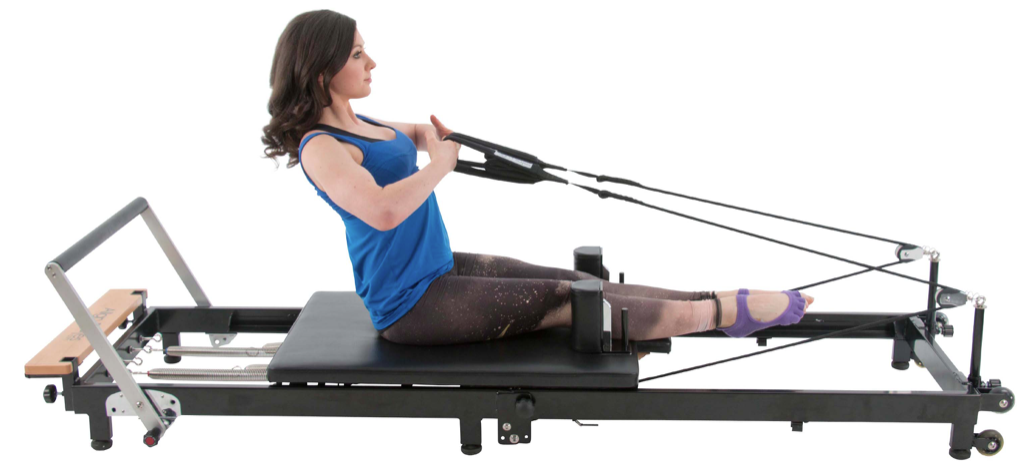
Pros
● Easily foldable for storage
● Wide and strong frame/carriage
● Springs (not bungee cords)
● Adjustable footbar
● Relatively high price (£1200)
What’s the Difference Between a Home Reformer and a Studio Reformer?
Studio Reformers are large, expensive (as much as £5000) beasts, generally unsuitable for home use, but as you see here home Reformers range in price from around £300 to £1200 so hopefully within the range of many of us and ideal for getting your perfect Pilates Reformer workout at home.
Home Reformers are obviously made to meet this lower price, so it follows that materials used may not be as good as the equivalent materials used in Studio Reformers. But that doesn’t mean they can’t perform adequately — a Studio Reformer can be in use all-day, everyday, so needs to be strong enough to last, while a home Reformer might be used only once a day, or even once a week, so doesn’t need to be of the same standard to be used successfully at home for many, many years. Primarily, home Reformers are much smaller in size, keeping material costs down. Costs are saved by using cheaper alternatives too — bungee cords instead of purpose-made metal springs for example. Some of the cheaper home Reformers have fewer adjustments compared with Studio equivalents, though not so it interferes too much with how they can be used at home.
Basically, you get what you pay for — in life as well as in a home Reformer — but you certainly don’t need to spend a fortune getting a great home Reformer that will give you years and years of great service and Pilates workouts.
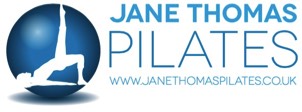
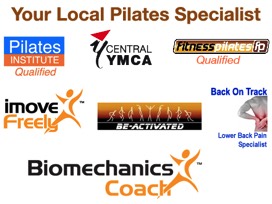
Pilates in Woodhouse Eaves
Woodhouse Eaves Pilates
Leicestershire Pilates
Nottinghamshire Pilates
Jane Thomas Pilates
Pilates in Loughborough